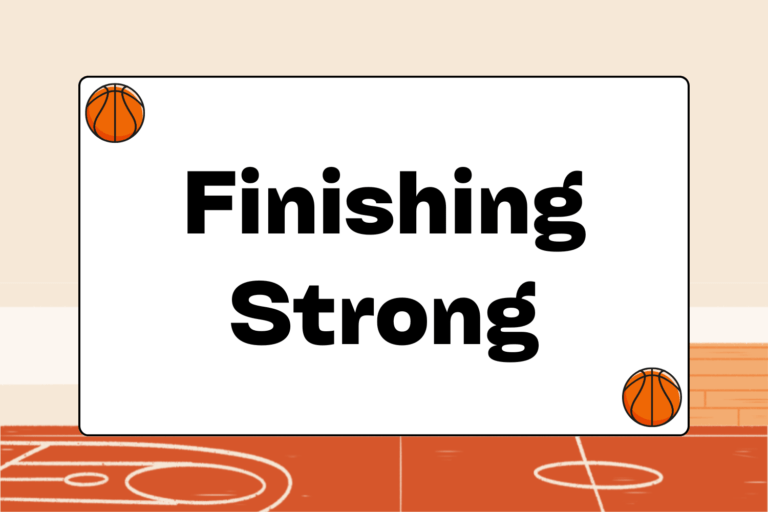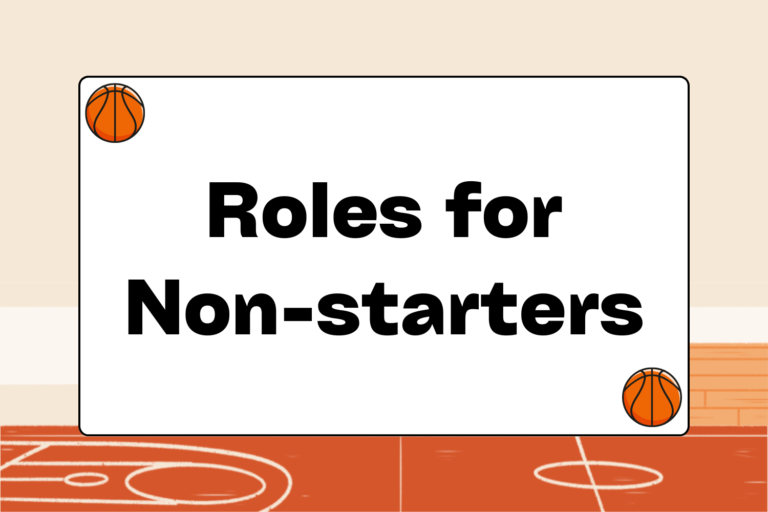Speed is one of the most valuable assets a basketball player can have. Speed in basketball is not necessarily about running as fast as possible in a straight line from a stationary position, though that type of speed is useful. More often, players need to be able to make short, lateral bursts, and sharp cuts while already in motion.
This guide will explore some effective strategies for building basketball-related speed.
Understand the Mechanics of Speed
Generally speaking, people who are gifted with great speed have a high level of fast-twitch muscle fibers, which lends itself to quicker reactions and the ability to create short, explosive bursts. As this is the case, building fast-twitch muscle fibers is the key to increasing speed.
For basketball players, speed training should have three main facets:
- Strength Training
- Speed and Acceleration Training
- Basketball-specific movements
Each one is essential for basketball speed and should be worked on with 100% effort. None of these three should be overemphasized, and basketball workouts should alternate them to be effective. Fortunately, there are many ways to develop this type of muscle, some of which are outlined below.
| Fast-Twitch Muscles | Slow-Twitch Muscles |
|---|---|
| Uses anaerobic metabolism for fuel | Uses oxygen for fuel |
| Fatigues more quickly | More energy efficient |
| Great for quick, powerful movements (sprinting, weightlifting…) | Great for endurance sports (marathons, triathlons…) |
Strength Training
Strength training for basketball is not about gaining mass; instead, it’s about building lean muscle in the legs and hips that can be transferred onto the floor. Unfortunately, strength training is too often overlooked by players and coaches in favor of drills, practice, and games. While these types of training activities are important, it is imperative that players develop adequate strength to build speed.
Good leg-strengthening exercises for getting faster include:
- Calf raises
- Swamp lunges
- Leg extensions/curls
- Squats
It’s important to rotate these exercises and include rest to avoid overworking these large muscle groups. These exercises also help players avoid injury while developing the strength to build speed. Combining these exercises with abdominal and back-strengthening exercises can yield great results.
Speed & Acceleration Training
Quick acceleration requires overcoming body mass and inertia while maintaining a high rate of velocity — in other words, being able to move quickly in many different directions. Simple cone drills are great for developing acceleration and speed. Here’s an example of one such drill:
- Two cones are placed along one side of the free throw lane – one at the elbow and one at the baseline.
- One player starts with one hand on the cone at the baseline. At the whistle, the player sprints for the cone at the elbow and taps it with their hand. They then immediately sprint back to the first cone and tap it. This is done five times in total.
- A coach or teammate should time the player, stopping the clock when the player taps the baseline cone that fifth and final time.
This simple drill is a great way to increase speed because it emphasizes several key speed-building attributes:
- Staying low: Players must lunge and maintain a 45-degree body position in order to maintain their momentum.
- Arms and elbows: Players have to learn to use their arms to generate quick forward momentum.
- Turn hips: To gain quick speed, it’s important to pivot at the hips when going from sidestepping to running.
- Develop leg strength: Lunging and bending down are essential to decreasing the time it takes to complete this drill.
This type of acceleration drill should be run with plenty of rest in between. Unlike interval training, the idea is to go full throttle each time with 100% effort and eventually decrease the amount of time it takes to complete the drill, not to run it as many times as possible.
Mental Edge
Simply playing basketball is a good way to improve acceleration and quickness on the court. Unfortunately, too many coaches and players rely on scrimmages alone to get in basketball shape. It’s important to utilize both fitness and simulation-based drills when working on building speed.
Basketball-specific Movement
It’s common to do lay-up and ball denial drills in practice. When working to increase speed, it’s important to attack these drills as quickly as possible:
- A good lay-up drill for speed is to run from the top of the three-point line to the rim and back, making as many lay-ups as possible in one minute.
- A good ball-denial drill for speed involves setting up two cones and sliding-stepping back and forth, with alternating hands raised to deny a pass to an offensive player.
When performed with 100% energy, basketball-specific movements generate fast-twitch muscle fibers. Doing these drills rigorously, in combination with strength training and acceleration drills, is a great recipe for speed-building success.
Anticipation
The final (and least appreciated) secret to developing speed is having great anticipation on the basketball court. Anticipation allows a player to be a half-step closer to their destination and can be the difference between average and great speed. Some of the best players on the court have only average quickness, but very good basketball speed because they can anticipate the opponent’s movement on the floor.
Great anticipation comes from studying the game and the opponent and learning to recognize repeated tendencies. For example, a defender guarding a dribbler who likes to go left can angle their feet in that direction, and be a half-step ahead to cut the dribbler off. Knowing the opponent’s game is a great tool for developing anticipation.
Fun Fact
Former Boston Celtic great Larry Bird was always one of the slower players on the floor during his Hall of Fame career. Bird relied on anticipation and intense study of his opponent to become an above-average defensive player and was eventually named to three second-team All-Defensive Teams.
Speed is Key
Having great speed is one of the most useful and versatile characteristics a basketball player can have. Speed allows players to get more rebounds and loose balls, and can be the secret to lockdown defense. It’s still important to develop all the different aspects of the game, but a high level of speed offers an undeniable advantage over slower players.





